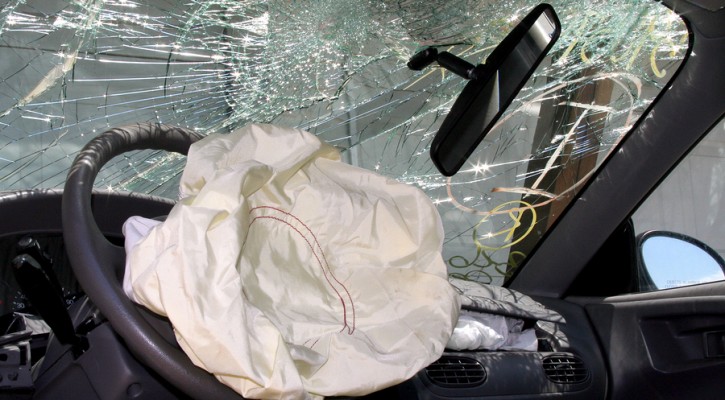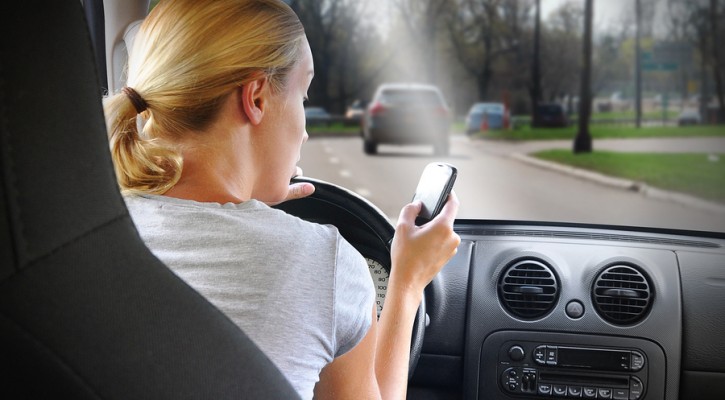Tag Archive: seat belts

When Teen Crashes Hit Close To Home
October 30, 2014
I’ve been writing articles on teen crashes and teen driving safety for years and, quite frankly, it’s becoming more and more difficult to come up with something new and fresh when the teens keep killing themselves the same way month after month.
Last week the issue hit close to home when one of my Grandson’s close friends was killed in a car crash. The details were sketchy because the crash is still being investigated but, according to the newspaper account, he applied his brakes when another vehicle entered the road, the passenger side wheels left the roadway and it appears he over-corrected. His vehicle flipped approximately four or five times and, because he wasn’t wearing a seat belt, he was ejected from the vehicle. He was taken to a nearby hospital where he was pronounced dead.
His passengers who were wearing seat belts weren’t seriously injured and were cleared at the scene.
In August, in the “Ask the Driving School Instructor” column, I answered a question on the most common type of car crash experienced by teens. In that column I wrote that the most common type of fatal teen crashes, according to all the news reports I read, involved teen drivers who:
- were either distracted, speeding, or both;
- veered off the road;
- over-corrected, sending their vehicle into a spin or tumbling over; and
- weren’t wearing a seat belt.
The tragic thing about this and all the other crashes that kill more than five teen drivers a day is that they were so easily preventable.
Teens need to be taught how to safely recover if their vehicle leaves the side of the road. The natural instinct is to jerk the steering wheel back toward the roadway (over-correct) but, at high speeds, that can cause the vehicle to spin out or flip over. If young drivers find themselves in that position, they should be taught not to give into that natural instinct to jerk the wheel back toward the road. Instead, they should grip the wheel, watch where they’re going and slow the vehicle down. After slowing to a safe speed and checking that the roadway is clear, they can then turn the wheel to reenter the road.
Most important of all, teens need to learn the importance of wearing a seat belt. Among the 16 to 20 year old age group, 55 percent of the vehicle occupants who were killed in teen crashes in 2012 weren’t wearing a seat belt. No matter how bad the crash may be, you’re always better off and have a far greater chance of surviving a crash if you’re properly buckled into your seat belt and shoulder harness. Had he been wearing his seat belt, he may have walked away from the crash with his friends. If this young man’s grieving friends take anything else away from this crash, hopefully they will learn to always wear a seat belt.
There’s no such thing as a car accident! Accidents are something we have no control over. Car crashes happen when one or more drivers make a bad choice that leads to tragic consequences. Even if you can’t avoid a crash, you can still make the right choices to survive it.
Seat Belt Or No Seat Belt?
July 10, 2014
According to crash data, the number of teens who don’t wear seat belts is on the rise. Check out this video to see the difference between wearing a seat belt or not wearing a seat belt. Remember; the airbag may not always deploy and, if you aren’t wearing your seat belt, the crash forces of your body flying forward against an airbag that is explosively traveling in the other direction can lead to serious injuries. Combined with the proper use of seat belts, the airbag can be a lifesaver.

Use Of Seat Belts By Teens Decreasing
July 9, 2014
The Governors Highway Administration and the Allstate Foundation have teamed up to create a report on the lack of seat belt use by teens. Over the past three years, the number of teens killed in car crashes who weren’t wearing seat belts has increased by up to six percent with more than half not wearing seat belts. The figures are even higher for passengers of teen drivers with more than 60 percent not using seat belts. To read what your state is doing and what you can do to to increase seat belt use by teens, read: Getting It To Click! Connecting Teens And Seat Belt Use

Disturbing New Study On Teen Driving Behavior
June 5, 2014
Safe Kids Worldwide an organization devoted to child safety along with the General Motors Foundation recently released a survey on teen driving behavior. In talking with 1,000 teens, they discovered, among other things that:
- One in four teens don’t wear seat belts.
- Teens who don’t wear seat belts are more likely to say that they text while driving than those who do.
- Thirty-nine percent of teens say they have ridden with a teen driver who was texting.
- More than half have ridden in a car with a parent who was using a cellphone.
- Forty-nine percent of teens feel unsafe when riding with a teen driver.
Read more: Research Report: Teens in Cars

Car Surfing and Riding Outside the Vehicle
May 11, 2012
Recently, news reports have told the story of at least five teens that were severely injured as a result of “car surfing”, or riding outside a vehicle.
In one incident, a 14 year old Georgia boy was riding in the trunk of a vehicle overloaded with teens. He was ejected from the vehicle and suffered severe brain injury. He remained in the intensive care unit for three weeks until he was taken off life support and died. The 19 year old driver is now facing charges in the incident.
In another incident from Georgia, a 16 year old boy skipped school with several others and was hanging outside an SUV traveling at a high rate of speed. The driver lost control and the SUV rolled crushing the teen underneath. At last report, he remains in a coma.
Two girls, one from Pennsylvania and another from Florida were injured while attempting to car-surf. Car surfing involves trying to remain upright or “surfing” on top of a moving vehicle. The Pennsylvania girl was taken to the hospital in critical condition. The Florida girl remains in a medically induced coma.
Another 17 year old boy was trying to hold down a mattress in the back of a pickup truck traveling at approximately 35 to 40 mph. The airstream, both above and below the mattress, created a wing-like effect, lifting the mattress along with the boy into the air. The boy died due to massive brain trauma.
Teens tend to feel invincible but no matter how strong, athletic or agile they may be, they will never be strong or agile enough to overcome the laws of physics. An object in motion tends to remain in motion in a straight line. That means that, while attempting to car-surf, if the vehicle should suddenly stop or turn, the “surfer” will continue traveling ahead at the same rate of speed, usually crashing into the pavement. Even at speeds as low as 10 to 15 mph, the results can be catastrophic.
Even inside the vehicle, if they aren’t wearing a seat belt, they are asking for trouble. Another recent incident involved a teen girl who was engaged in horseplay with her boyfriend while the vehicle was in motion. Authorities are unsure of what exactly happened but it is felt that the girl accidentally hit the door handle, opening the door. Not wearing a seat belt, she was thrown out of the vehicle and suffered traumatic brain injury.
Most of these incidents involved teens engaged in horseplay in or on a moving vehicle without a seat belt to hold them in place; most also involved cars driven by a teen with more than one other passenger. Graduated driving laws in most states usually restrict the number of passengers a teen can carry because it is well proven that, the more teen passengers a teen driver carries, the greater the distractions and the greater the temptation to show off.
Teens and adults need to be constantly reminded that there is no safe place on or in a vehicle except in a passenger seat securely buckled in with a seat belt.
